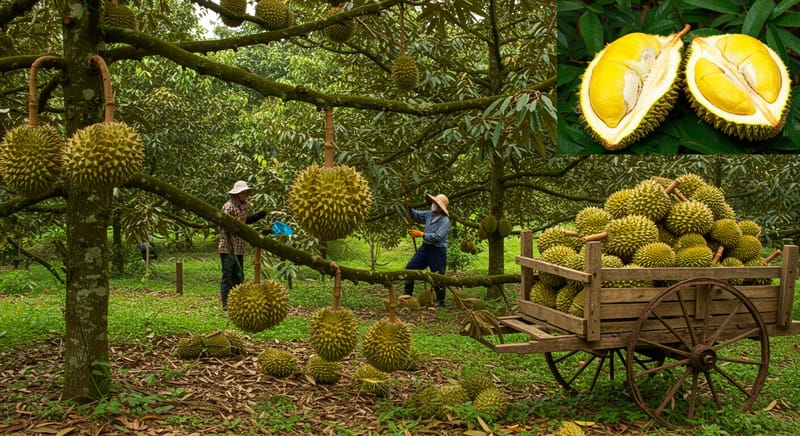Kostroma: The Cheese Capital of Central Russia and Its Rich Dairy Heritage
Kostroma, Russia, a city nestled within the heart of the country, carries an extensive list of credentials that make it a place of cultural significance. Known for the famed residence of Snegurochka, the legendary Ivan Susanin, linen fabrics, temples, and exquisite jewelry, Kostroma's appeal extends far beyond these

Kostroma, Russia, a city nestled within the heart of the country, carries an extensive list of credentials that make it a place of cultural significance. Known for the famed residence of Snegurochka, the legendary Ivan Susanin, linen fabrics, temples, and exquisite jewelry, Kostroma's appeal extends far beyond these familiar symbols. However, among all its offerings, it's perhaps best celebrated as the cheese capital of Central Russia, home to the renowned 'Kostroma Cheese'.
A Historical Bite: Cheese in Russia
Cheese, as we know it, made its debut in Russia about 150 years ago, with Nikolai Vasilievich Vereshchagin at the helm. Vereshchagin embarked on a journey to Switzerland to master the craft of cheesemaking and returned to his home in the Tver province to open Russia's first cheese factory. In 1871, backed by the eminent Russian chemist D. I. Mendeleev, he founded a cheesemaking school, which unfortunately had to shut down after 23 years due to political unrest.
The cheesemaking industry in Russia evolved from these humble beginnings to industrial-scale factories churning out tonnes of cheese. Presently, three types of cheese are widely recognized: hard, soft, and melted. These are derived from a variety of milk sources, including cow, goat, sheep, and even camels and horses, each carrying a unique flavor profile, fat content, and degree of maturation.
Kostroma Cheese: A Delicacy Born in the Green Plains
Kostroma's love affair with cheese began in 1878 when merchant Vladimir Blandov opened the city's first cheese factory. Cheese, a rare and costly treat back then, was only enjoyed on special occasions and was largely out of reach for the common populace.
Despite these circumstances, Kostroma cheese quickly won the hearts of many, inspiring cheesemaking in other Russian provinces and even beyond, in the CIS countries. Today, the Kostroma region proudly houses around 11 major cheese factories, producing notable varieties such as "Kostroma", "Susaninsky", "Demidov", "Voskresensky", and "Ivan Kupala".
The Kostroma region is blessed with an ideal landscape for dairy farming, with its expansive green plains and numerous rivers nurturing lush flood meadows. With a low population density, minimal industrial influence, and a notable absence of environmentally hazardous industries, Kostroma retains its status as one of Russia's most eco-friendly regions.
Cheesemaking Tradition and Its Modern Relevance
In today's age of advanced technology and chemically processed foods, the need for quality and ecologically sound products has become paramount. Kostroma dairy products are celebrated for their excellent taste, as well as their commitment to using natural and eco-friendly milk.
Cheesemaking in Kostroma, unlike other dairy products, only commenced in the 19th century, with a product resembling cheese curd, derived from natural milk curdling, being the norm. The roots of Kostroma's cheesemaking tradition can be traced back to merchant Blandov, who was inspired by N.V.Vereshchagin's cheese factory in Otrokovichi, Tver province. His own cheese factory in the village of Andreevsky, Kostroma district, started operation in 1878, effectively establishing Kostroma's industrial cheesemaking tradition.
After the revolution, the introduction of progressive cheesemaking methods and modernization of dairy farming led to a burgeoning dairy industry. In the mid-20th century, Kostroma rose to fame for developing one of the most productive breeds of meat and dairy cattle - the Kostroma breed. The 70s and 90s saw milk production in the region peak, with the factories of Susaninsky district alone producing 570 tons of cheese per year.
The late 20th century marked a significant milestone for the Kostroma region's cheesemaking tradition. In 1978, to celebrate the hundredth anniversary of the beginning of cheesemaking in the Susaninsky district, a nationwide "working out" was conducted at a plant. This led to the development of a new cheese with an accelerated maturation period, which was subsequently named "Susaninsky."
In present times, nearly all the major districts in the Kostroma region boast their own cheese factories. Kostroma and Susaninsky cheeses are widely recognized and distributed, often receiving high awards at the "Russian Foodstuffs" exhibitions. Notably, "Susaninsky" cheese features in the catalog "100 Best Goods of Russia."
Kostroma: A Cultural Epicurean Experience
The Kostroma experience is incomplete without a sensory exploration of its varied cheese offerings. You can savor cheeses packed with nuts (walnuts or almonds), fruits (grapes, apples, or pears), honey, or olives, all offering a twist on the familiar taste of cheese.
Kostroma's reputation as the cheese capital of Russia is a testament to its centuries-old traditions of cheesemaking, the natural milk produced from the Kostroma breed of cows grazing in ecologically clean meadows, and the mastery of its cheesemakers, who have been lauded at numerous contests and exhibitions.
Today, to savor the finest cheeses, you needn't travel far. A visit to Kostroma promises not just a taste of some of the most exquisite cheeses, but also an experience steeped in cultural and historical richness. So why not embark on a journey to this cheese city, and explore the story behind every cheese wheel, one slice at a time?
Author's Note:
Cheese, and the culture surrounding it, has its roots deep in history. While Kostroma cheese stands as a testament to the local tradition, it also represents a link between the past and the present, maintaining the richness of its heritage while embracing modernity and its offerings. This duality makes Kostroma cheese not just a gastronomic delight but also a symbol of a resilient culture that continues to thrive in the face of change.




